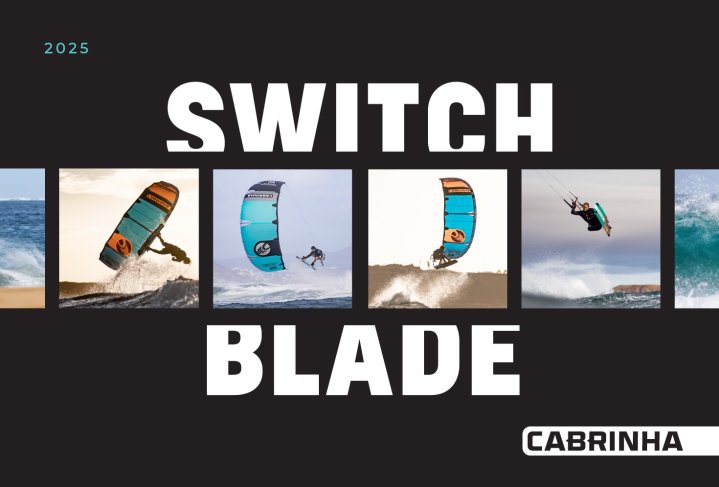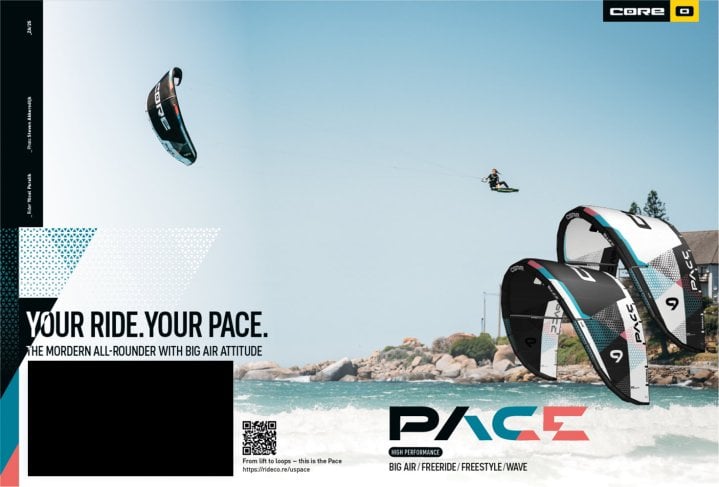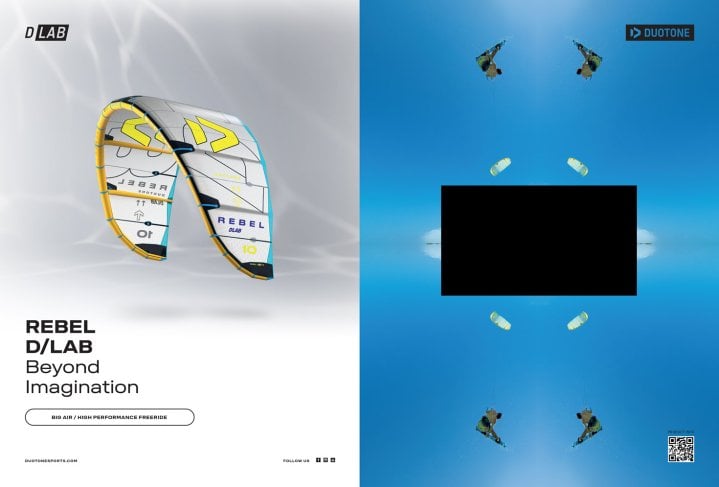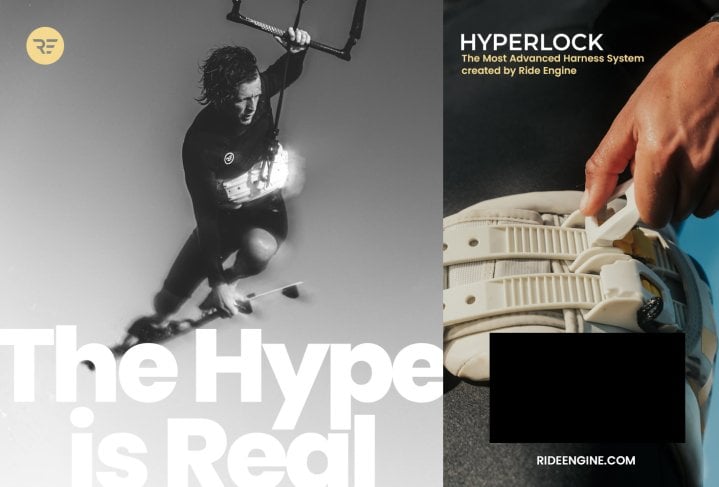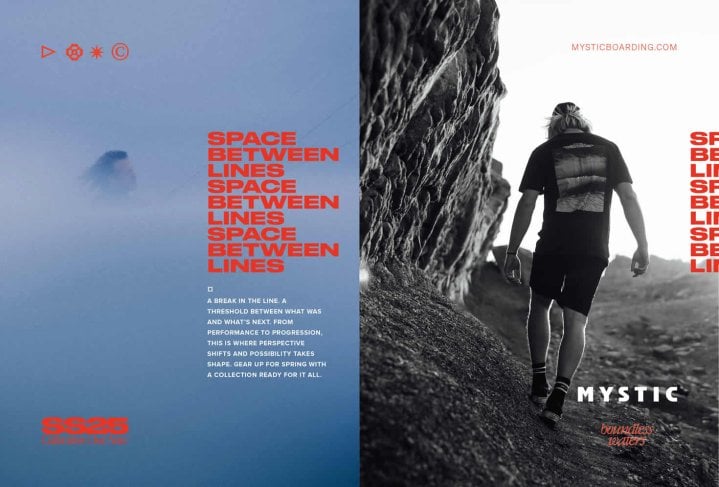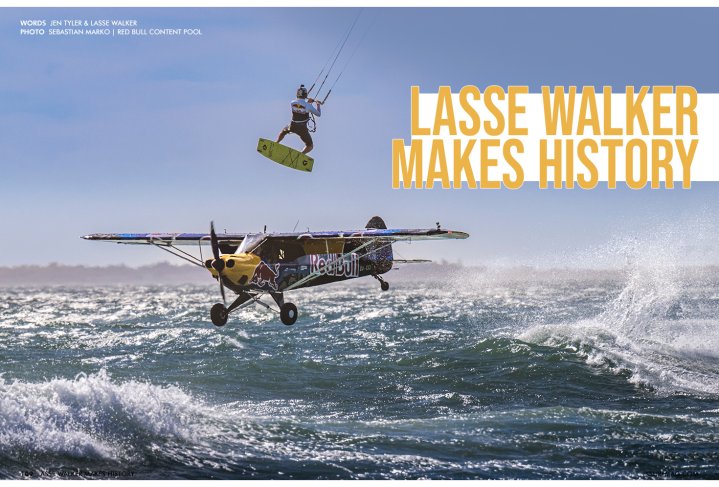
Lasse Walker Makes History - Jumping Over Red Bull’s Plane
Issue 109 / Wed 12th Feb, 2025
Teaming up with aerobatic pilot Łukasz Czepiela, Lasse Walker made kiteboarding history by pulling off a world-first: jumping over a flying plane! In this chat with Jen Tyler, Lasse spills the details on how the wild idea took flight, the challenges of pulling off such a high-stakes stunt, and why Cape Town was the ultimate playground for making it happen. With strong winds, epic teamwork, and a passion for pushing limits, this isn’t just a story about a jump—it’s about making history!
Lasse, what a stunt—massive congratulations! Let’s begin at the beginning: where and how did you first meet Lukasz Czepiela, and how did the idea develop?
Interestingly, the very first meeting took place during a completely different project called “Inflight Interview with Red Bull.” Luke asked me questions in this session while I experienced the wildest ride of my life. As we went through flips, spins, and intense G-forces that nearly made me lose consciousness, Luke inquired about how I got started in kiteboarding and what I love most about it.
After our interview in 2021, Luke and I kept in touch. He mentioned that he owns a high-speed aerobatic plane and a plane that can fly extremely slowly. A few months later, while I was on a flight from Bonaire to Amsterdam, the pilot announced that we were facing a strong headwind and that the flight would take longer than expected. This made me think that, in extreme conditions, Luke could potentially fly his slow plane at a very low speed—perhaps even stationary.
Shortly after, I sent Luke a message on Instagram, and we decided to pitch the project to Red Bull together. Of course, they were very excited to explore the idea further.
How did you pitch the idea to Red Bull, and what sort of team did you need to bring this project to life?
The process of pitching the idea to Red Bull and then moving into the actual attempts was incredibly demanding, but it was also where we created the magic recipe for our success. Luke and I were both convinced that we could make this work. Pitching the idea and executing it were crucial for our achievement.
Luke said, “Yeah, of course, I can fly super slow and low; I do it by feeling since the instruments won’t respond quickly enough.” I replied, “Absolutely! I can jump over you—I’ve always jumped high, so let’s do this!”
Our confidence convinced the people in our preparation team, which included our athlete managers, content managers, project managers, safety experts, aviation experts, caddies, and a special project specialist. He has worked on many of the world’s biggest and most innovative projects, and his experience encouraged us to focus more on solving potential problems rather than indulging in “wishful thinking.” This perspective was sometimes a bit demotivating in the early stages, as it felt like we were much further from completing the jump than I had initially thought.
I can only imagine the work that a project like this requires. Could you share the preparations, data, permits, and other requirements involved in such a project?
To convince Red Bull that we could jump, we needed to provide a solid amount of data demonstrating our skills. This was relatively straightforward for me. I simply mounted a Woo on my board and consistently performed kite loops in 30 knots of wind, again and again. Consistency is key; I achieved an average jump height ranging from 12 to 14 meters, sometimes peaking at 16 meters.
For a quick safety calculation, the plane flies at an altitude of 5 meters and is 2.7 meters high. We need to add some margin above it, bringing the total height to 7.7 meters. Therefore, we decided that the absolute minimum jump height should be 10 meters, with our target being a minimum of 12 meters.
Obtaining the necessary data was a challenge for Luke—more like a dilemma, really. From our perspective, the lower Luke flew, the greater the distance between the plane and me. However, explaining this to the aviation authorities was quite different. In their view, lower flights are inherently more dangerous. In fact, flying lower than 10 meters is generally not an option under any circumstances.
Fortunately, Luke had extensive training and gathered data from his previous project in Dubai. He successfully landed his aeroplane on a helicopter platform atop the 7-star Burj Al Arab Hotel. This platform served as a runway 20 meters long and was over 200 meters in the air.
What likely made this project more challenging than anticipated is that we adhered strictly to company guidelines. Red Bull aims to continue executing remarkable projects like this, so everything we do must align with their standards. Additionally, Luke is a commercial airline pilot. For his professional career and personal reputation, we all want to ensure that nothing jeopardises his license or name.
Were there any setbacks or close calls during the preparation?
We faced some setbacks, the biggest being when we focused entirely on the project in the Netherlands. However, we had established good communication with all relevant authorities, including those overseeing aviation regulations and nature zones we were restricted from entering. Additionally, we had coordinated with the airports to ensure that our staff would be permitted on the runway to assist Luke’s plane.
Last year, when we were fully prepared and ready in the Netherlands, we were waiting for favourable wind conditions. Unfortunately, we received some bad news regarding a key part of the permit. Despite this setback, we did not give up on the project. However, we quickly concluded that continuing in the Netherlands would be very difficult, so we decided to focus on another location instead.
What made you decide to do this project in Cape Town?
Cape Town is widely regarded as one of the best locations for Big Air kiteboarding. The combination of strong, steady winds and great waves creates the perfect conditions for enthusiasts like us (not to mention all the other reasons we love Cape Town). The biggest challenge was transporting our entire team and all the necessary equipment to this beautiful spot. Among these, Luke’s special Carbon Cub aeroplane was the most significant concern. Flying all the way from Poland to the southern tip of Africa isn’t the easiest journey, especially since the aircraft is designed for a slower pace.
Fortunately, Luke found an alternative, and we acquired a Carbon Cub in South Africa. Luke and his team worked hard to make it as close to his plane as possible, ensuring it had the same appearance, branding, flying characteristics, and everything else to make Luke comfortable.
With that resolved, Cape Town was the perfect location for our needs. Everyone enjoyed the pleasant weather, the airport was conveniently located, and our team and local contacts worked wonders to secure all the necessary permits and paperwork in time.
How did you and Luke coordinate the timing?
From the beginning, it was clear that Luke and I needed to communicate directly with each other. We tested various systems to make this communication as effective as possible, ranging from military-grade communication systems and simple walkie-talkie radios to equipment used by artists on stage at large concerts. Unfortunately, each of these systems had a limited range, and with Luke flying high in the sky, we often found ourselves more than 1000 meters apart. As a solution, we switched to a cellular group call, which allowed Luke and me to communicate perfectly while our team on the beach could listen in on our conversations.
Once Luke was in the air, he could see exactly where the sets of waves were forming. Luke is an incredibly skilled pilot, and even in those challenging conditions, he was able to update me about the waves lining up ahead of him. From that point, my job was to time our meet-up at the optimal spot so I could jump on the perfect kicker right in front of Luke and leap directly over the cockpit.
How did the windy conditions affect your jump and Luke’s flight?
This is where the story takes an interesting turn, and I’ll try to keep it simple. We needed the wind to help me kite and jump high enough for this project, but we also needed it to slow Luke down. His aeroplane can fly at about 35 knots (65 km/h), so with a 35-knot headwind, Luke could technically hover in the same position.
We found ourselves in a very narrow window of suitable conditions. If the wind was too light, I wouldn’t be able to jump high enough, and Luke would also fly faster, making the timing much more difficult and dangerous. Conversely, if the wind were too strong, Luke would encounter more turbulent conditions while flying low over the water and during takeoff and landing on the runway. The plane would be difficult to control without several people holding the wings down.
What safety measures were in place?
We were fortunate to work with Red Bull South Africa, which has organised the Red Bull King of the Air competition for 12 consecutive years. A safety team was on the water for this event, and the same team supported our Plane Jump project. The team is experienced in kitesurfing and understands the protocols for when someone needs assistance. They have been in similar situations and possess years of expertise.
For our project, we also included a team of free divers. Their role was to respond quickly and efficiently in case either Luke or I ended up in the ocean. One unique aspect of our plan was that if the plane landed in the water, it would float for a few minutes due to the hollow, air-filled cabin and wings. To ensure that we would never lose the plane in the ocean, one diver was specifically assigned to attach an inflatable buoy, allowing us always to know its location.
However, before taking any of these precautions, we ensured the plane would not end up in the ocean!
How does this jump compare to other jumps you’ve done in the past?
Interestingly, looking back, I see that the jump was quite similar to others I’ve done. However, the risk involved with the plane jump is significantly higher than jumping over a small boat or performing a standard jump. The biggest difference, I believe, is the pressure of having the whole team there.
The whale jump was spontaneous and came as a big surprise, adding to my excitement and fear. This spontaneity likely contributed to why that moment and its success on social media felt so significant. Everything just came together, and it felt right to make that jump.
The same applies to jumping over boats and other objects. When the conditions are favourable, and I feel comfortable, I’ve even managed to grab a Red Bull can off the second story of a yacht on my second attempt. When I’m in control and everything feels right, I perform pretty well—at least, that’s my humble opinion.
The biggest challenge with the plane jump, compared to those other moments, was the size of the team involved. At that moment, everything had to come together perfectly, so it was essential to figure out how to ensure everything aligned and felt right.
What motivates you to take high-risk jumps?
That’s a great question. I just live for it. However, it’s not entirely the right question for me. The jump was a high-risk stunt, but we took every possible measure to minimise that risk. As long as no major surprises occurred, we were all 100% confident in our success; otherwise, we would never have attempted it. As Luke wisely stated, “We do crazy things, but not stupid things.” There is a big difference between the two. We are professional athletes with a dedicated team, so we strive for perfection, not the reckless mentality often seen in Nitro Circus or Jackass, where you just “f*%& around and find out!”
Now that you are a father, has your perspective changed in any way?
Becoming a dad has completely changed me in many ways. Having my little family to come home to is incredible and doesn’t compare to anything else. I've never had a solid base after travelling so much and spending Christmas back home only once in the last 15 years. But now, coming home to my girls is truly amazing. They, along with my parents, are my biggest supporters. They give me the confidence to pursue my goals and inspire me to succeed.
Videos
By Jen Tyler
Italian/Egyptian Jen Tyler grew up on the sandy beaches of the Red Sea and has been on the IKSURFMAG & Tonic Mag team since 2017.



